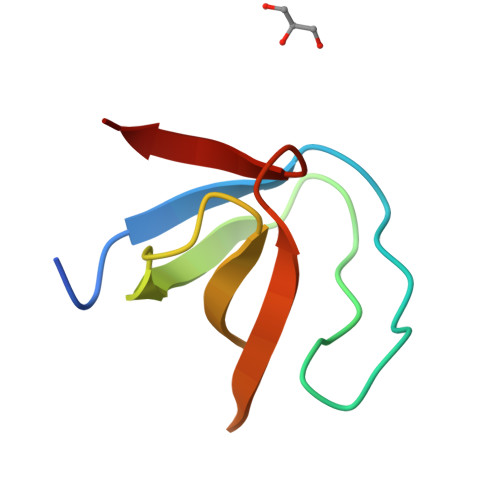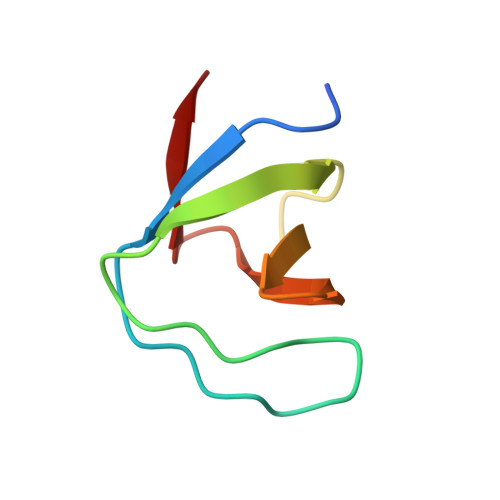A Thermodynamic and Kinetic Analysis of the Folding Pathway of an SH3 Domain Entropically Stabilised by a Redesigned Hydrophobic Core
Cobos, E.S., Filimonov, V.V., Vega, M.C., Mateo, P.L., Serrano, L., Martinez, J.C.(2003) J Mol Biology 328: 221
- PubMed: 12684010
- DOI: https://doi.org/10.1016/s0022-2836(03)00273-0
- Primary Citation of Related Structures:
1E7O - PubMed Abstract:
The folding thermodynamics and kinetics of the alpha-spectrin SH3 domain with a redesigned hydrophobic core have been studied. The introduction of five replacements, A11V, V23L, M25V, V44I and V58L, resulted in an increase of 16% in the overall volume of the side-chains forming the hydrophobic core but caused no remarkable changes to the positions of the backbone atoms. Judging by the scanning calorimetry data, the increased stability of the folded structure of the new SH3-variant is caused by entropic factors, since the changes in heat capacity and enthalpy upon the unfolding of the wild-type and mutant proteins were identical at 298 K. It appears that the design process resulted in an increase in burying both the hydrophobic and hydrophilic surfaces, which resulted in a compensatory effect upon the changes in heat capacity and enthalpy. Kinetic analysis shows that both the folding and unfolding rate constants are higher for the new variant, suggesting that its transition state becomes more stable compared to the folded and unfolded states. The phi(double dagger-U) values found for a number of side-chains are slightly lower than those of the wild-type protein, indicating that although the transition state ensemble (TSE) did not change overall, it has moved towards a more denatured conformation, in accordance with Hammond's postulate. Thus, the acceleration of the folding-unfolding reactions is caused mainly by an improvement in the specific and/or non-specific hydrophobic interactions within the TSE rather than by changes in the contact order. Experimental evidence showing that the TSE changes globally according to its hydrophobic content suggests that hydrophobicity may modulate the kinetic behaviour and also the folding pathway of a protein.
Organizational Affiliation:
Department of Physical Chemistry and Institute of Biotechnology, Faculty of Sciences, University of Granada, 1807 Granada, Spain.

















